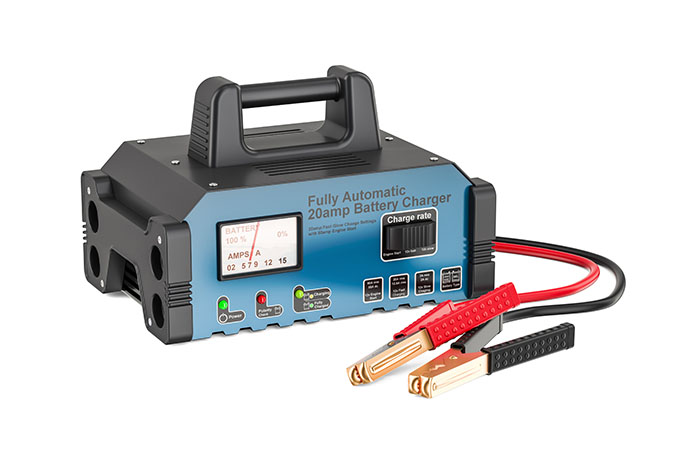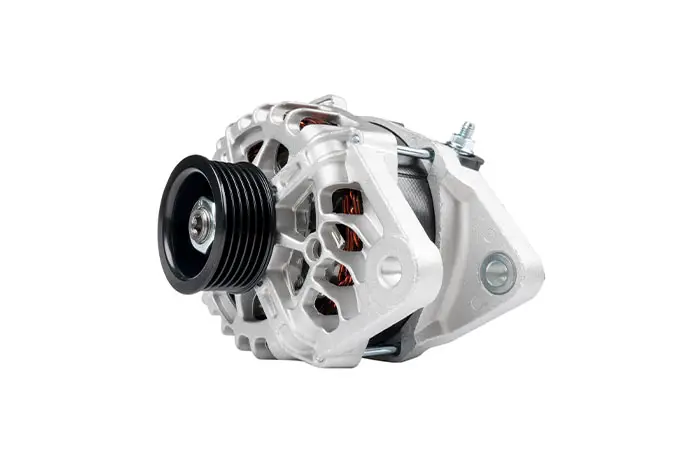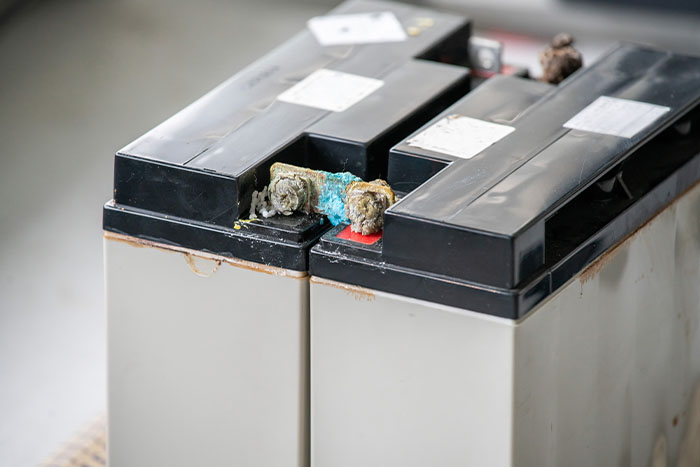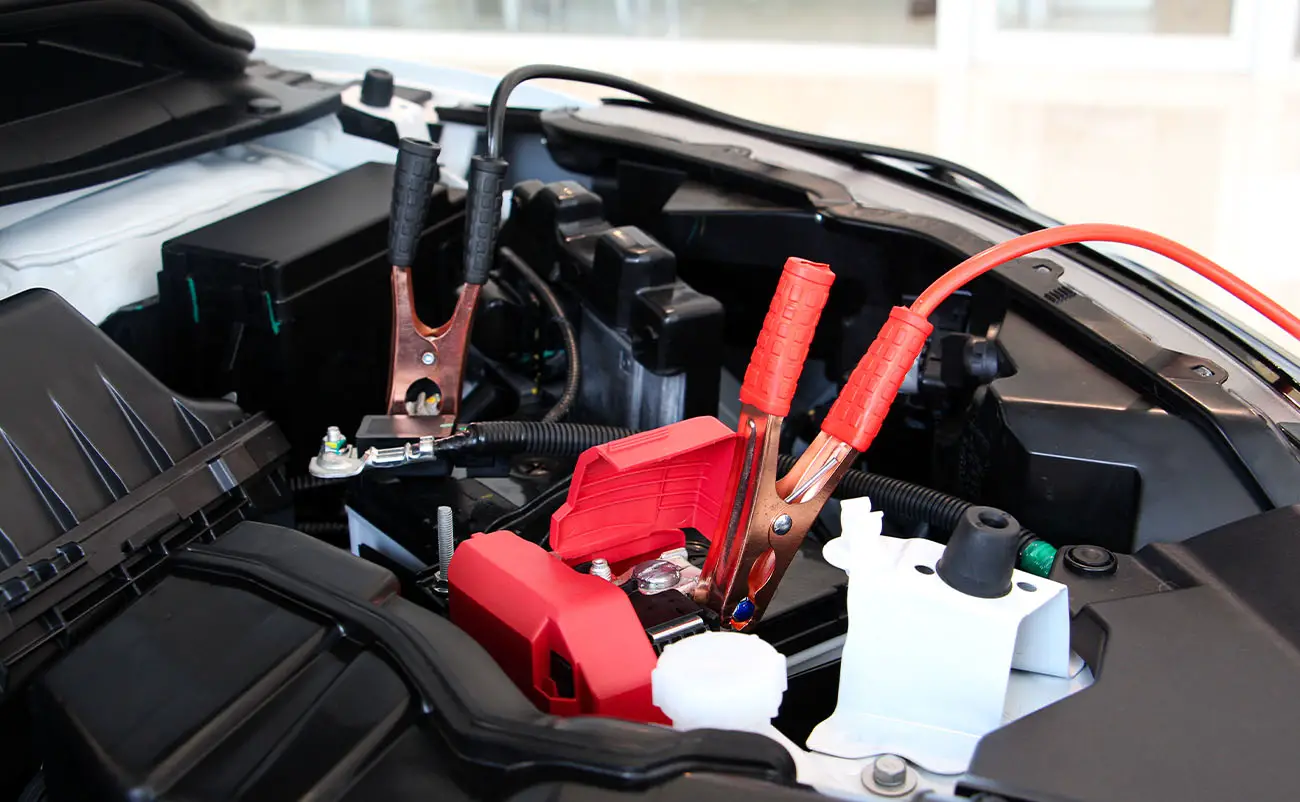Have you ever returned to your car shortly after parking, but it won’t start? Then it gets you wondering, why isn’t it starting? I hate to break it to you, but you have a flat battery. The starter motor draws considerable charge from the battery on every start cycle to get the engine rolling. Driving for a short period doesn’t give your battery sufficient time to recharge and will affect its capacity to supply charge during the next start cycle. This begs the question, how long does it take to charge a car battery? Keep reading as we provide you with all the information about charging car batteries, what to look out for, and how long the process will take.
Table of Contents
How Long Does It Take To Charge A Car Battery

The time taken to recharge a car battery is dependent on several factors. It could take anywhere between 2-10 hours, depending on how dead the car battery is and how much power the battery charger gives off. Now, let’s look at how different charger capacities can impact battery charging time.
— 40 Amp Battery Charger
A 40 amp charger is so-called because it puts out 40 amps an hour. Now, this sounds fast, and it is, but you need to exercise caution while using it. These chargers are quick boosters and only advisable if you are in a rush. Repeatedly fast charging your battery reduces its overall lifespan.
With a 40 amp charger, the maximum time you should charge your car battery is two hours. This is because charging with a 40 amp battery is best done in short bursts. Doing otherwise carries the risk of explosions or electrical fires — something you don’t want happening to your battery. It’s enough inconvenience having to deal with a flat battery without throwing an electrical fire into the mix.
— 2 Amp Battery Charger
This is the ideal way of recharging your battery. Most people prefer fast charging. It’s understandable that you want your car battery up and running as soon as possible, but you should also think long-term when possible. Slow charging is better for your car battery because a faster charging rate can damage the battery, reduce its performance, and ultimately shorten its life cycle.
Charging at a rate of 10 amps and below is generally considered slow charging, while 20 amps and above is considered fast charging. So, a 1 amp, 2 amp, or 4 amp charger falls comfortably in this category. The charging duration of a 12-volt battery using a 2 amp charger should take between 12 to 30 hours.
— Trickle Charger
A trickle charger supplies low voltage to your battery to keep it charged, making it an excellent choice if you intend to charge your battery for a long period without the risk of overcharging. Overcharging a lead-acid battery increases its temperature causing the acid to evaporate. A trickle charger usually operates at a low amp and takes between 24 to 48 hours to charge a 12-volt battery, depending on its output. With a trickle charger, you can plug in your battery without the risk of overcharging.
— Smart Charger
A smart charger, sometimes referred to as a multi-stage battery charger, takes off the burden of worrying about overcharging. Think about it, you will be away from home for a while and don’t want a flat battery on arrival, nor do you want to overcharge. Smart chargers are technologically advanced and could be used to charge your battery if you don’t plan on driving for an extended period of time. Unlike linear chargers that run at a continuous charge, these chargers detect charge levels, appropriately charge your battery and switch off at full charge.
How To Reduce Your Battery Charging Time

The battery depth of discharge is one crucial factor determining your car battery charging duration. Recharging a fully discharged battery will most certainly take longer than one that still has a 50% charge. Discussed below are some tips to help reduce your battery charging time:
— Take longer trips: Driving short distances seems like a harmless activity, but it is a significant factor that impacts battery charge time. Short commutes don’t give the alternator enough time to send an electrical current back to your battery to recharge as you drive. Continuous short trips gradually drain your battery until it loses all the charge and requires a longer charging period. Hence, if you want to reduce your charging time, you should favor long trips over short ones.
— Minimal use of electrical components on battery power: If you don’t have your car engine running, you shouldn’t leave your headlight, infotainment system, or any electrical component on. Unnecessary use of battery power is a sure way to drain its charge. Always ensure you turn off any equipment that could deplete the battery charge before exiting your car.
— Keep your battery clean: If the casing of your battery is covered with dirt, grime, or other greasy debris, your battery may discharge across it. This creates a form of a short circuit that eventually causes your battery to get flat quicker, resulting in increased charging time.
— Reduce battery heat: Heightened battery temperature evaporates the battery acid from the cells. This, in turn, weakens them and consequently leaves them needing longer charging periods.
If your battery doesn’t have enough charge, all you get is a clicking sound when you turn the ignition. While a dead battery is a possible cause, the clicking sound could have also resulted from other causes.
Using Your Alternator As A Car Battery Charger

The alternator provides electrical energy for all the electrical components in your vehicle and recharges your battery while the engine is running. It converts mechanical energy into electrical energy. The key phrase there is “while the engine is running.” Now we have cleared the basics, here’s some essential information to keep in mind.
Your car alternator can only charge a low battery but cannot recharge a dead one. This is the difference between the alternator and a car battery charger. The reason is that the battery provides the initial power needed to get the engine running. A dead battery has no power and cannot supply the required charge for ignition. In the absence of engine power, the alternator cannot function.
Ideally, recharging your car battery with your alternator after starting should take about five to ten minutes. However, apart from having difficulty restoring the battery charge, recharging your low battery using the alternator could shorten its lifespan. If you have a very low battery, you should recharge it using a battery charger because the alternator only provides a top-up charge to recharge batteries after starting or short discharge.
Can I Jump-Start A Dead Battery?
A jump-start, otherwise called a boost, is a process used to start a vehicle with a completely dead battery. A temporary connection is established with another car battery or source of electricity to get in a bit of charge needed to start the engine. The engine running creates electrical energy in the alternator, which is then used to charge the battery.
So, yes, you can jump-start a dead battery. However, you would need jumper cables and usually another vehicle. You should also note that boosting a battery comes with risks and requires extra caution. You must always connect the positive cable before the negative one. Batteries emit hydrogen gas during charging, which is highly flammable, and a spark from the positive cable could ignite the gas, causing an explosion. You also don’t want the positive cable touching the negative one or any metal part as it could short out the entire connection.
Also, jump-starting damaged or frozen batteries may cause damage to the vehicle. The charge could expand the gas inside the frozen battery, causing an explosion. Overall, you must follow all safety precautions closely or get professional assistance when jump-starting your battery.
What Causes A Dead Battery?

Most drivers only think about their batteries when it dies. Once it does, they usually have several questions, with the most popular one being the causes of a dead battery. Discussed below are the most common causes of a dead battery:
— Electrical components left running overnight: Electrical components draw power from the battery when the engine isn’t running. Forgetting to turn off your headlight, completely close the trunk, or leave internal lights running overnight will drain your battery charge.
— Electrical problem: Batteries naturally self-discharge since they have to supply energy to some systems to keep them running. Your vehicle security system is one of those systems that run in the background. However, an electrical problem due to faulty wiring, poor installation, or a defective fuse can cause parasitic drain resulting in the total depletion of your battery charge.
— Faulty charging system: Your vehicle’s charging system powers the electrical components and recharges the battery while the engine is running. An issue with the charging system due to a loose belt, worn tensioners, or faulty alternator could hinder your battery from recharging and affect the energy supply to electrical components. Consequently, the electrical systems turn to the battery for energy supply, and without means of recharging, the battery loses all its charge.
— Extreme temperatures: Extremely hot or cold temperatures affects battery performance. Cold weather impacts your battery performance, while hot temperature shortens the lifespan. The freezing temperature slows down the energy reaction inside the battery and drains its power, causing the battery to die out.
— Poor battery maintenance: Poor maintenance could lead to corrosion or dirt buildup on the battery terminals. Corroded terminals may affect the efficient transfer of electric current to the battery, preventing the battery from adequately recharging.
— Old battery: A battery is expected to last between three to four years. You may want to consider replacing the battery once it exceeds three years as its capacity to hold a charge would have depreciated. This causes the battery to lose charge faster than it used to.
If your car refuses to start after being parked, it’s more likely to be a problem with the battery. However, several other factors could prevent your car from starting. Having your battery die once is understandable, but if it becomes a recurring occurrence, it is a sign of an issue with the battery that needs further investigation.
Battery Charging Times For Electric Cars
Electric cars are given special consideration here because they are more battery dependent than conventional automobiles. The charging time of an electric vehicle depends on the battery capacity and the speed of the charging point. Charging an electric car can be done following a deep or short discharge.
A typical electric vehicle takes about 8 hours to go from empty to full charge if you use a 7kW charging point. You can increase range by up to 100 miles in 35 minutes using a 50kW rapid charging point for many electric cars. Here are examples of some EV models and the time taken to reach full charge from empty:
— The Tesla Model S (2019) takes about 11 hours using a 7kW fast charge on a 75kWh battery for an effective range of 238 miles.
— The Nissan Leaf takes an average of 6 hours for a battery of 40kWh and an effective range of 143 miles using a 7kw charging point.
— The Mitsubishi Outlander PHEV takes an average of 4 hours for a battery of 13.8 kWh and an effective range of 24 miles using a 7kw charging point.
The Bottom Line
The amount of time used to recharge a car battery usually depends on the battery depth discharge and the charger output. Charging the battery can be done through the alternator or with a charger. However, it is best to recharge a dead battery with a charger instead of the alternator, as batteries are best recharged at a low amperage after deep discharge to ensure longevity.
Frequently Asked Questions
Is 30 minutes enough to charge a car battery?
As earlier mentioned, the duration depends on the depth of discharge and the type of battery charger. With a fast charger, thirty minutes should get your battery to a workable level. A rapid charger would also get in enough charge to start the vehicle within thirty minutes, after which you can continue the charging process with the alternator.
How long does it take to charge a car battery from the alternator?
The charge duration while using the alternator depends on its output. The vehicle speed and load usually influence the alternator output. On average, it takes about twenty minutes of driving at highway speeds to fully recharge the battery after a short drain. However, it may take longer if the battery is severely discharged.
How many amps does it take to charge a car battery?
There are several chargers on the market with varying amperage output. However, battery manufacturers recommend sizing the charger at about 25% of the battery amp-hour capacity. Therefore, a 10 amp 12-volt charger is the most suitable for a 40 amp-hour 12-volt battery. Although using a higher output charger would reduce the charge time, it may decrease battery lifespan.
What is the best way to charge a car battery?
The ideal way of charging depends on individual circumstances. Batteries are best charged after starting or short discharge using the alternator. However, it is best to trickle charge your dead car battery over a long period after a total drain. However, you need to be careful not to overcharge the battery.

